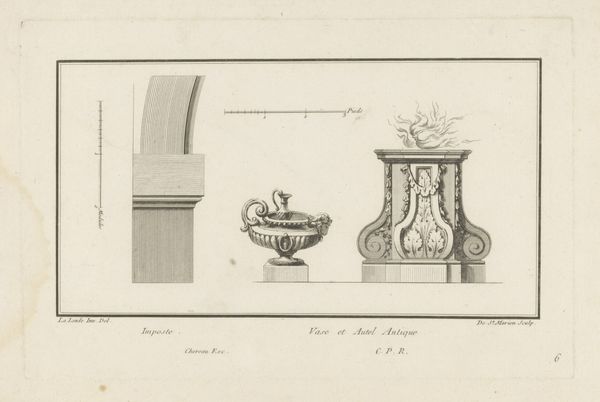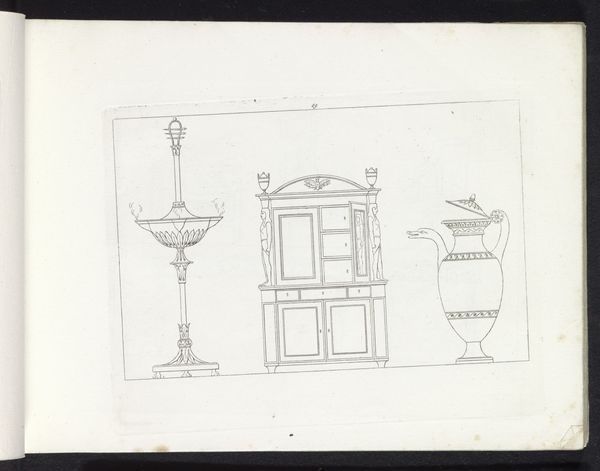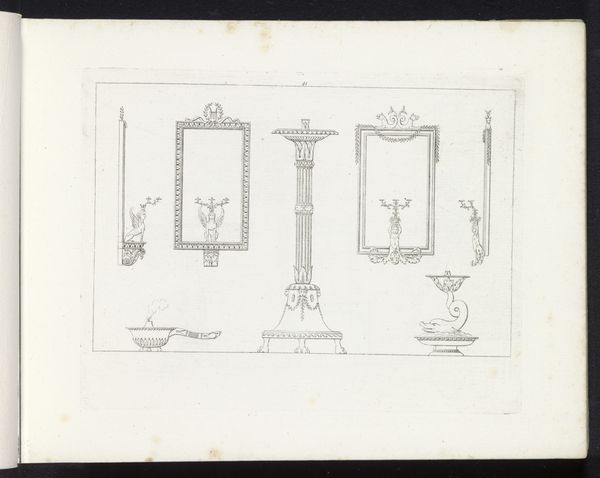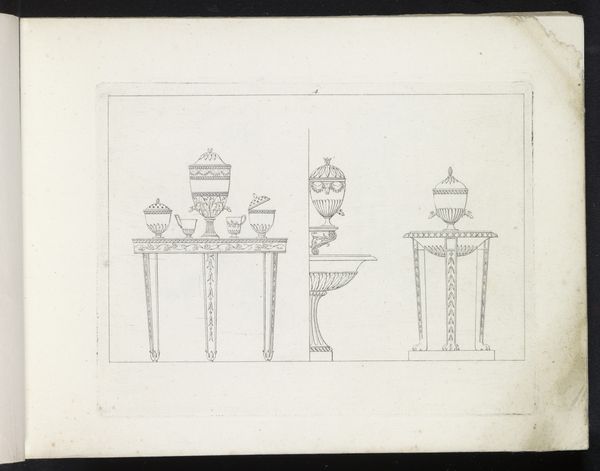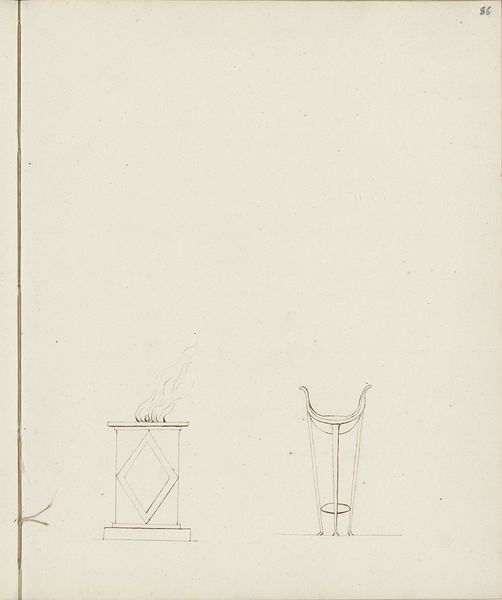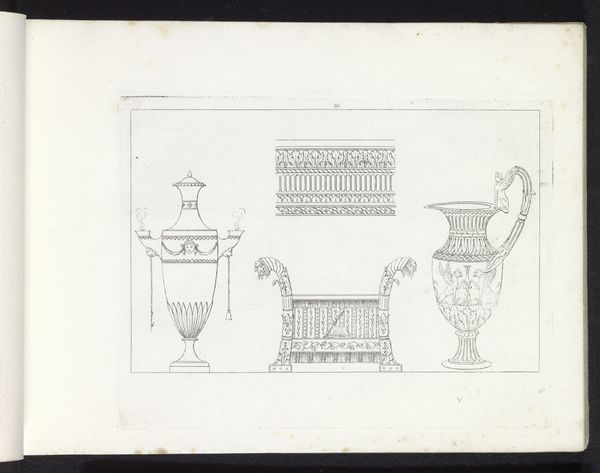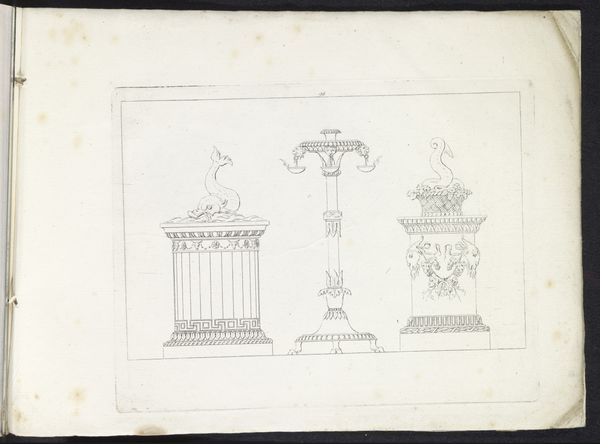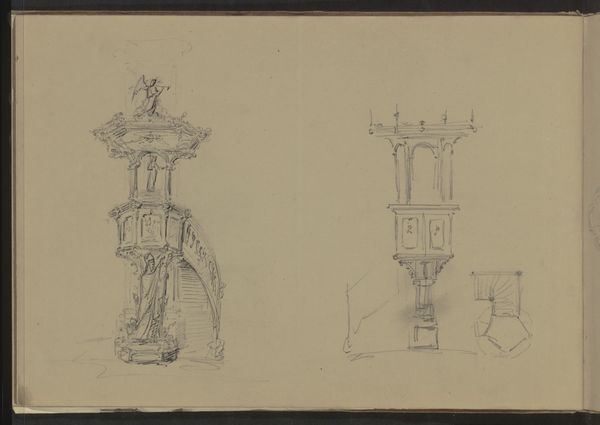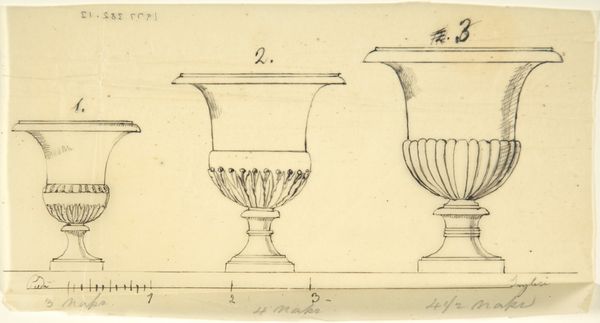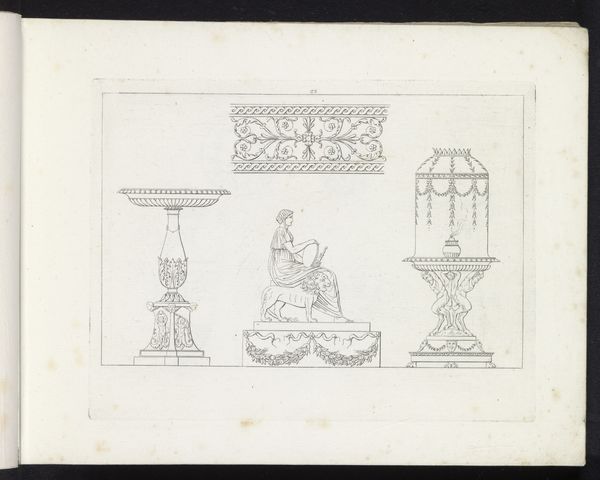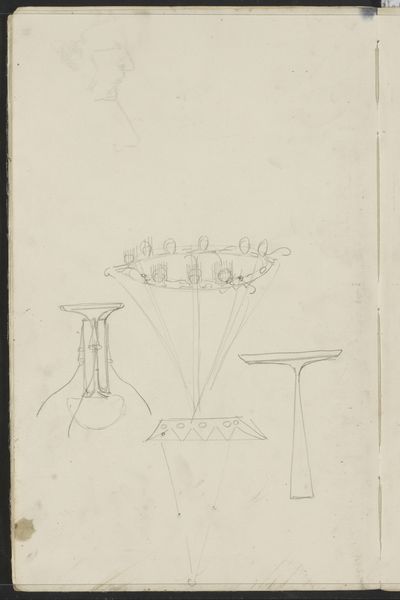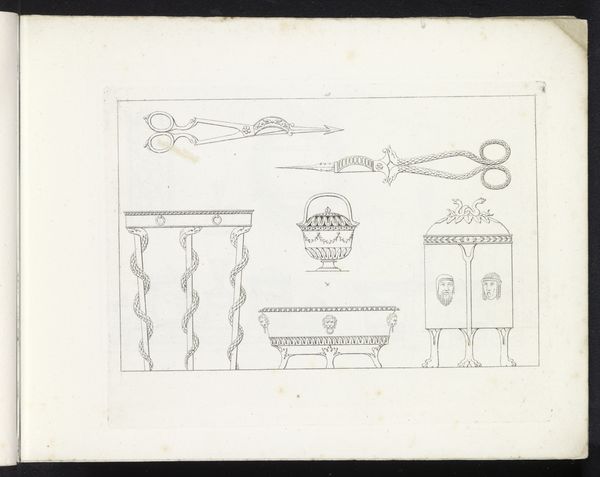
Modeltekeningen van klassieke lamp, vaas en driepoot 1780 - 1849
0:00
0:00
drawing, paper, pencil
#
drawing
#
neoclacissism
#
aged paper
#
homemade paper
#
flat design on paper
#
sketch book
#
classical-realism
#
paper
#
form
#
personal sketchbook
#
pencil
#
line
#
sketchbook drawing
#
storyboard and sketchbook work
#
academic-art
#
fashion sketch
#
sketchbook art
#
design on paper
Dimensions: height 187 mm, width 250 mm
Copyright: Rijks Museum: Open Domain
Editor: This is "Modeltekeningen van klassieke lamp, vaas en driepoot," a drawing from between 1780 and 1849 by David-Pierre Giottino Humbert de Superville, held at the Rijksmuseum. It looks like a page from a sketchbook, with delicate lines depicting classical objects. What stands out to me is how spare and clean the lines are, and I am curious to know more about it. How do you interpret this work? Curator: Indeed! These aren't just sketches, they’re echoes. Humbert de Superville isn’t merely recording forms; he's invoking the power these forms held. Consider the objects he chose. The lamp, a source of light, suggests enlightenment. The vase, an urn perhaps, with its ties to ritual, memory and libations. And the tripod, a structure of support and stability. Editor: So, these objects would have resonated with specific meanings for viewers at the time? Curator: Precisely. Neoclassicism sought to revive the virtues of the ancient world. Each object is a symbolic carrier. A single laurel branch tied to a vase implies triumph and virtue. Imagine these images circulating among artists and intellectuals; they serve as shorthand, a visual language understood to evoke specific cultural values. What emotional effect does this aesthetic of simple lines create? Editor: I think it makes the images seem both timeless and also incomplete, like a foundation for something grander. There is a restrained beauty, but also melancholy. Curator: The lack of color or ornamentation directs our attention to form and structure. I find myself pondering the purpose: Were these drawings meant as preparatory sketches, or as standalone statements about the enduring relevance of classical ideals? And how might those ideals have offered solace or direction in the turbulent times after the French Revolution? Editor: I hadn't thought about the social and political context! Seeing them as symbols and less like, you know, old things, changes everything. It’s like deciphering a secret code. Curator: Precisely, these sketched lines act as portals through time. It makes one question the permanence of design!
Comments
No comments
Be the first to comment and join the conversation on the ultimate creative platform.
